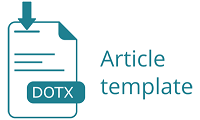Lifestyle Risk Factors and Hypertension on Students: a Cross Sectional Study
DOI:
https://doi.org/10.32807/jkp.v18i2.1692Keywords:
Adolescent Hypertension, Body Mass Index, Lifestyle Behaviors, Risk FactorsAbstract
References
CDC. (2019). National Center for Health Statistics 2015. Health United States, Table 19. http://www.cdc.gov/nchs/fastats/leading-causes-of-death.htm
Fuchs, F. D., & Whelton, P. K. (2020). High Blood Pressure and Cardiovascular Disease. Hypertension, 75(2), 285–292. https://doi.org/10.1161/HYPERTENSIONAHA.119.14240
Hannan, J. A., Commodore-Mensah, Y., Tokieda, N., Smith, A. P., Gawlik, K. S., Murakami, L., Cooper, J., Koob, S., Wright, K. D., Cassarino, D., Arslanian-Engoren, C., & Melnyk, B. M. (2022). Improving hypertension control and cardiovascular health: An urgent call to action for nursing. Worldviews on Evidence-Based Nursing, 19(1), 6–15. https://doi.org/10.1111/wvn.12560
Himmelfarb, C. R. D., Commodore-Mensah, Y., & Hill, M. N. (2016). Expanding the Role of Nurses to Improve Hypertension Care and Control Globally. Annals of Global Health, 82(2), 243–253. https://doi.org/10.1016/j.aogh.2016.02.003
Hussain, M. A., Mamun, A. Al, Peters, S. A. E., Woodward, M., & Huxley, R. R. (2016). The burden of cardiovascular disease attributable to major modifiable risk factors in Indonesia. Journal of Epidemiology, 26(10), 515–521. https://doi.org/10.2188/jea.JE20150178
Isfaizah, I., & Widyaningsih, A. (2021). Hubungan Indeks Massa Tubuh dengan Tekanan darah pada Remaja di SMK NU Ungaran. Indonesian Journal of Midwifery (IJM), 4(1), 68. https://doi.org/10.35473/ijm.v4i1.894
Kementrian Kesehatan RI. (2017). Rencana Aksi Nasional Pencegahan dan Pengendalian Penyakit Tidak Menular 2015-2019.
Krist, A. H., Davidson, K. W., Mangione, C. M., Cabana, M., Caughey, A. B., Davis, E. M., Donahue, K. E., Doubeni, C. A., Kubik, M., Li, L., Ogedegbe, G., Pbert, L., Silverstein, M., Stevermer, J., Tseng, C. W., & Wong, J. B. (2021). Screening for Hypertension in Adults: US Preventive Services Task Force Reaffirmation Recommendation Statement. JAMA - Journal of the American Medical Association, 325(16), 1650–1656. https://doi.org/10.1001/jama.2021.4987
Lin, X., Wang, X., Li, X., Song, L., Meng, Z., Yang, Q., Zhang, W., Gao, Y., Yang, Z., Cai, H., Bian, B., Li, Y., Yu, X., Du, X., Xu, S., Nie, J., Liu, M., Sun, J., Zhang, Q., … Fan, Y. (2019). Gender- and age-specific differences in the association of hyperuricemia and hypertension: A cross-sectional study. International Journal of Endocrinology, 2019. https://doi.org/10.1155/2019/7545137
Manios, Y., Karatzi, K., Moschonis, G., Ioannou, G., Androutsos, O., Lionis, C., & Chrousos, G. (2019). Lifestyle, anthropometric, sociodemographic and perinatal correlates of early adolescence hypertension: The Healthy Growth Study. Nutrition, Metabolism and Cardiovascular Diseases, 29(2), 159–169. https://doi.org/10.1016/j.numecd.2018.10.007
Martiningsih, Inayati, N., Ahmad, & Syaiful. (2021). Correlation between smoking behavior and blood pressure among teenagers in Bima, Indonesia. Rawal Medical Journal, 46(3), 503–506.
Martiningsih, Enie Novieastari, Dewi Gayatri, and Astuti Nursasi. 2023. “Effectiveness of Self-Care Intervention in Hypertension Patients: A Systematic Review.†Rawal Medical Journal 48(4):1070. doi: 10.5455/rmj.20230801092826.
Ministry, R. H. (2018). Hasil Utama Riskesdas 2018. https://doi.org/10.1177/109019817400200403
NICE, 2022. (2022). Hypertension in adults: Diagnosis and management. Practice Nurse, 49(9).
Rokhmah, D. (2023). Santri Smoking Behavior Determinant At “X†Islamic Boarding School in Jember Regency. Jurnal Promkes, 11(1), 1–10. https://doi.org/10.20473/jpk.v11.i1.2023.1-10
Spies, L. A., Bader, S. G., Opollo, J. G., & Gray, J. (2018). Nurse-Led Interventions for Hypertension: A Scoping Review With Implications for Evidence-Based Practice. Worldviews on Evidence-Based Nursing, 15(4), 247–256. https://doi.org/10.1111/wvn.12297
Tam, H. L., Wong, E. M. L., & Cheung, K. (2020). Effectiveness of educational interventions on adherence to lifestyle modifications among hypertensive patients: An integrative review. International Journal of Environmental Research and Public Health, 17(7). https://doi.org/10.3390/ijerph17072513
Thomas, H., Diamond, J., Vieco, A., Chaudhuri, S., Shinnar, E., Cromer, S., Perel, P., Mensah, G. A., Narula, J., Johnson, C. O., Roth, G. A., & Moran, A. E. (2018). Global Atlas of Cardiovascular Disease 2000-2016: The Path to Prevention and Control. Global Heart, 13(3), 143–163. https://doi.org/10.1016/j.gheart.2018.09.511
Van Oort, S., Beulens, J. W. J., Van Ballegooijen, A. J., Grobbee, D. E., & Larsson, S. C. (2020). Association of Cardiovascular Risk Factors and Lifestyle Behaviors with Hypertension: A Mendelian Randomization Study. Hypertension, 76(6), 1971–1979. https://doi.org/10.1161/HYPERTENSIONAHA.120.15761
Yang, L., Magnussen, C. G., Yang, L., Bovet, P., & Xi, B. (2020). Elevated Blood Pressure in Childhood or Adolescence and Cardiovascular Outcomes in Adulthood: A Systematic Review. Hypertension, 75(4), 948–955. https://doi.org/10.1161/HYPERTENSIONAHA.119.14168
Zahwan Maulana Mawardy, Andra Kurnianto, P. R. S. (2021). RELATIONSHIP BETWEEN FAMILY HISTORY OF HYPERTENSION AND SMOKING HABITS WITH INCIDENCE OF HYPERTENSION AMONG ADOLESCENTS IN PALEMBANG. 1(April), 40.
Zhou, B., Perel, P., Mensah, G. A., & Ezzati, M. (2021). Global epidemiology, health burden and effective interventions for elevated blood pressure and hypertension. Nature Reviews Cardiology, 18(11), 785–802. https://doi.org/10.1038/s41569-021-00559-8




